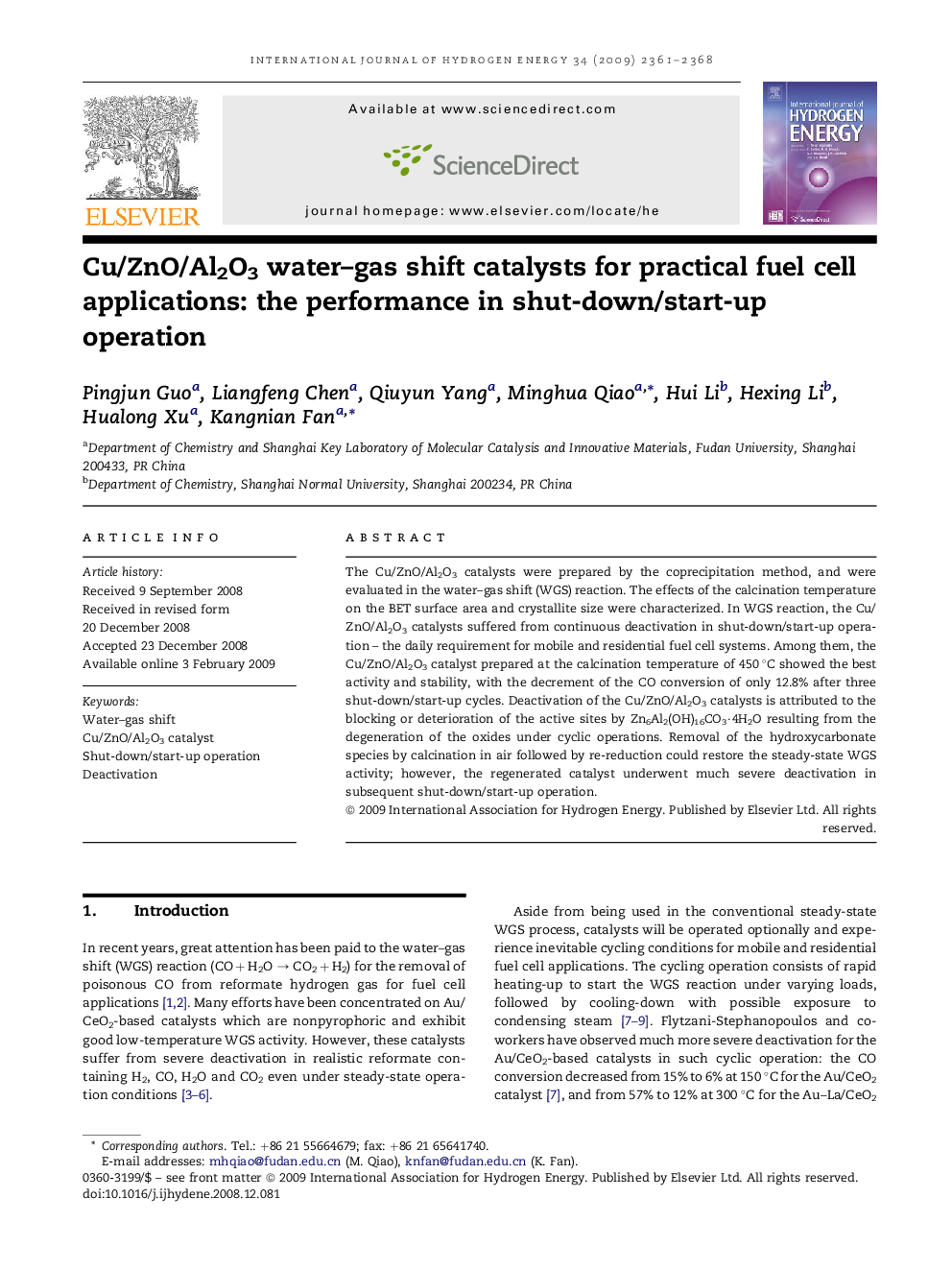| کد مقاله | کد نشریه | سال انتشار | مقاله انگلیسی | نسخه تمام متن |
|---|---|---|---|---|
| 1283294 | 1497637 | 2009 | 8 صفحه PDF | دانلود رایگان |

The Cu/ZnO/Al2O3 catalysts were prepared by the coprecipitation method, and were evaluated in the water–gas shift (WGS) reaction. The effects of the calcination temperature on the BET surface area and crystallite size were characterized. In WGS reaction, the Cu/ZnO/Al2O3 catalysts suffered from continuous deactivation in shut-down/start-up operation – the daily requirement for mobile and residential fuel cell systems. Among them, the Cu/ZnO/Al2O3 catalyst prepared at the calcination temperature of 450 °C showed the best activity and stability, with the decrement of the CO conversion of only 12.8% after three shut-down/start-up cycles. Deactivation of the Cu/ZnO/Al2O3 catalysts is attributed to the blocking or deterioration of the active sites by Zn6Al2(OH)16CO3·4H2O resulting from the degeneration of the oxides under cyclic operations. Removal of the hydroxycarbonate species by calcination in air followed by re-reduction could restore the steady-state WGS activity; however, the regenerated catalyst underwent much severe deactivation in subsequent shut-down/start-up operation.
Journal: International Journal of Hydrogen Energy - Volume 34, Issue 5, March 2009, Pages 2361–2368